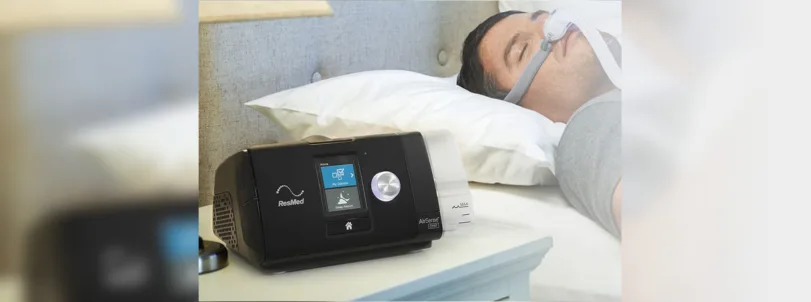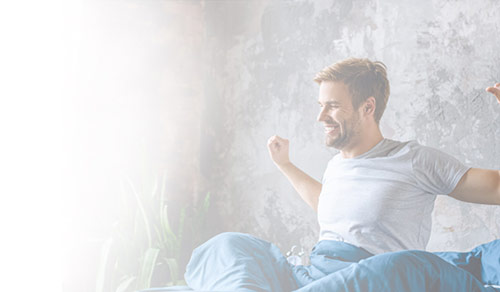
Find Your Perfect Humidity Level for ResMed CPAP
A Positive Airway Pressure (PAP) device is widely accepted as being the most effective method for controlling obstructive sleep apnea.
Every device has its own operating and maintenance instructions which should be followed to achieve maximum effectiveness.
Probably the biggest difficulties sleep apnea sufferers have is achieving the best humidity setting. The optimum setting will vary from person to person — and will also need to be adjusted to allow for external influences such as a change of seasons and the temperature of the room.
When using a PAP device for the first time, and for the first week or two, it is best to use the manufacturer’s recommended settings while taking note of any areas of concern.
Most PAP devices have integrated humidifiers which can be manipulated by the user. One of the best-known makers and suppliers of PAP devices is ResMed whose devices are used and trusted in many countries around the globe.
The PAP devices produced by this leader in medical device technology have built-in humidifiers — which allow the user to tweak the settings until the best humidity level for their Resmed PAP device is identified.
Proper Humidity is Vital
Setting the humidifier at the correct level is vital for quality sleep and the success of PAP therapy.
The pressurized air delivered by the device can easily cause dryness in the nose and throat. This is particularly true during cold winter months and for people taking certain prescribed medications.
Not all drugs impact negatively on PAP therapy, but a number of prescription and over-the-counter medications are known to cause dryness — including some antidepressants, antihistamines and anti-psychotics as well as treatments for blood pressure and heart conditions.
If the nose and throat are allowed to dry significantly during sleep it can have a knock-on effect such as skin irritation, nosebleeds, sore throats and dry mouth.
This is why PAP devices are fitted with some form of heated humidifier as this will greatly reduce the risk of these health problems.
Optimum Setting
Using the recommended humidity level may be sufficient for many obstructive sleep apnea sufferers when first getting used to the device — and PAP therapy but this does not mean that this is the optimum setting.
The setting that is ideal for one person may be totally unsuitable for another. Selecting the optimum setting is very much a matter of trial and error — but the process should take no more than a few nights to complete.
The human nose acts as a natural humidifier as it heats inhaled air to body temperature. This process makes the air intake more comfortable — and the heated air will not harm the tissues in the nose, air passages and lungs.
In contrast, the pressurized air required to keep the air passage open delivered by a PAP device enters the body too quickly to be warmed as it would when breathing naturally. The dry air being delivered is what causes the membranes and tissues to dry out and cause physical reactions.
Using an incorrect or unsuitable humidity level setting can have two unwanted consequences:
Dryness of the throat and air passage is common among obstructive sleep apnea sufferers who use too low a temperature or humidity setting.
A side effect called “rainout” occurs when the heated air condenses in the tubing and mask leading to a wet face and a disturbed night’s sleep.
These, and other problems, can be completely avoided by ensuring the optimum temperature and humidity settings are always used.
Minor Changes
Being able to breathe easily and comfortably is of the utmost importance for a good night’s sleep. Many PAP devices have an automatic setting for temperature and humidity that are suitable for most people in most cases.
However, this does not mean that the experience and effectiveness of PAP therapy cannot be improved upon by making a few minor changes.
There are two settings on a PAP device that can be adjusted: humidity and temperature.
Humidity. Dry air is the most common issue and causes dry mouth in around 40% of obstructive sleep apnea sufferers using a PAP device.
Temperature. An unsuitable temperature setting can impact adversely on the humidity level and may need to be increased or decreased slightly.
As a general rule, the majority of sleep apnea sufferers find that cool air is more conducive to better quality sleep. Unfortunately, however, warm air has better humidity which greatly reduces the risk of nasal and air passage irritation and dryness.
Making Adjustments
Making any changes to the recommended or prescribed setting should be done in small stages and with caution.
It is advisable to discuss any issues with PAP therapy with the doctor or sleep specialist in charge of the treatment — before any alterations are made as these changes may not necessarily be for the best.
Having sought assistance and guidance, any settings changes should be incremental until the optimum result is achieved. Starting with the recommended settings is crucial until it can be determined if these are suitable or not.
Personal preference will be a factor in which settings are best and seasonal changes will also play a role. During summer months, the air is warmer with higher humidity so lowering the humidity setting and temperature will usually be required. Winter, with colder and drier air, will likely necessitate increasing both the temperature and humidity levels.
Many PAP devices have an auto-adjustment feature which will detect changes in air temperature and humidity — and make the necessary changes automatically to compensate for the variations.
Although this is an excellent labor-saving feature it does not mean that the chosen settings are ideal for every obstructive sleep apnea sufferer in every instance.
The key to finding the optimum humidity level is to make very minor adjustments — over a period of time — until the ideal setting is found. This may take days (or even weeks) but is a task that must be undertaken to get the best out of the PAP device — and the best results from PAP therapy.
